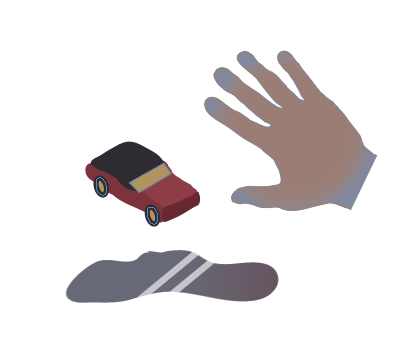Winter Well-Being
Staying safe during the winter

Recognizing and Driving on Black Ice:
Black ice forms most often in the early morning or the nighttime — usually the temperature outside is right at the freezing point.
Watch for glossy roads or cars suddenly swerving — this means there is black ice present.
If you do hit black ice, let the car travel over the ice on its own — trying to brake or steer can cause the car to spin out.
In any car, shift into the lowest gear — your car will have more traction.
Winter Driving:
Accelerate and decelerate slowly — this prevents skidding and loss of traction.
Drive slowly to avoid collisions — plan to leave your house earlier in order to reach your destination on time.
When driving up hills, try to gain speed on a flat road in order to have enough speed to continue up the hill.
Stay home — if the weather is bad enough, and you don’t have to go out. Stay indoors and make some hot chocolate.
Have an ice scraper with you at all times — Kansas is unpredictable. A blizzard could hit at any moment. Don’t be like some students last year who were left trying to scrape ice off their windshield without a scraper.
Never drive on cruise control.
Preventing slips on ice and snow:
Walk slowly.
Wear snow boots — they promote traction and are water resistant.
Be careful getting in and out of vehicles.
Avoid carrying heavy objects when walking on ice.
Carefully entering buildings — watch for slippery floors near the doorway.
Skidding:
Get your foot off the accelerator and the brake.
Steer gently in the direction you want the car to go.
As you begin to regain control of the car, gently apply the brakes in order to gain some traction.
Recognizing and Preventing frostbite:
Dress in multiple layers — the first layer should be moisture-wicking, the second layer should be insulating and the top layer should be wind and waterproof. Be sure snow cannot get into your clothing.
Wear two pairs of socks — the first should be light, the second should be insulating and made of thick material.
Wear ear warmers or a hat.
Wear insulated gloves or mittens — if you will be touching snow or ice, be sure these are wind and waterproof.
Watch for painful red spots on your skin. The area will turn gray or white and numb. Do not ignore uncomfortable or itchy sensations.
Treating frostbite:
See a doctor or go to the emergency room as soon as possible.
Until a doctor can be seen, keep the area warm.
Remove wet clothing.
Avoid walking on or touching frostbitten areas.
Do not break blisters.
Re-warm the area with warm, wet washcloths.
Bandage the area, place cotton balls between toes to keep them separated.
Take pain medication in order to reduce pain and inflammation.
Skin will turn red and become tingly as blood-flow returns.

Sarah Day is a senior staff writer for “The Tiger Print.” In her free time, Sarah enjoys serving at Church of the Resurrection, attending Kanakuk Kamps...



